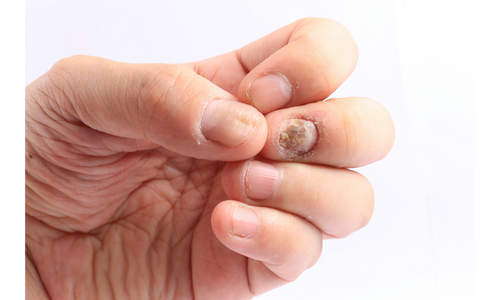
Nail fungus; It is an infection of the fingernails or toenails caused by a fungus. It causes thickening, color and shape change and breakage in finger or toe nails.
There are a few steps to nail fungus. It may be caused by different types of fungi. Fungi grow in the moist and airless environment inside shoes. Foot fungus can create a suitable environment for nail fungus.
What are the symptoms of nail fungus?
The nail color turns yellow or brown. The nail thickens and grows excessively. Bad skin under nails There may be a smelly buildup. As the infection progresses, the nail may gradually crumble and fall off, or it may become thick enough to cause discomfort or pain inside the shoe.
How is nail fungus diagnosed?
Your dermatologist can make a diagnosis by looking at the appearance of fingernails and toenails. Sometimes small samples may be taken from your nails. These samples are sent to the laboratory for testing and the diagnosis can be made definitively.
What are the factors that may increase your risk of nail fungus?
- Professions whose feet remain wet for a long time (military, athlete, miner, etc.)
- History of illness that may reduce your resistance to infection or block blood flow to your toes ( diabetes, circulatory disorders, HIV)
- Nails damage, traumas
- Wearing narrow and pointy shoes that pinch the toes,
- Locking rooms, swimming pools and showers Use of common areas such as
- Wearing the same shoes on top of each other
- Manicure and pedicure performed in an unhygienic environment with unsterilized instruments
- Stepping on the ground with bare feet
- A humid environment resulting from excessive sweating of the feet
- Bad&uum; foot hygiene
How long is the expected duration of nail fungus?
Nail fungus rarely heals on its own. It is usually a chronic (long-lasting) condition. It can gradually get worse and affect other nails. Even if the affected nail falls off, the new nail may become infected with fungus.
How to protect yourself from nail fungus disease?
To protect against nail fungus:
- You should wear comfortable shoes and socks that allow your feet to breathe.
- Commonly used shoes Other people's shoes, sandals or slippers should not be worn in showers and changing rooms.
- Wash your feet every day. Dry thoroughly and use a quality foot powder.
- Wear clean socks every day.
- Keep your nails short.
- Do not use pedicure tools. Disinfect first.
How is nail fungus disease treated?
Treatment involves removing the infected nail as much as possible by your doctor. It can start with . This can be done as follows:
- Cutting the nail with scissors
- Filing it
- Dissolving it with a cream containing urea li>
If your infection is mild and limited to a small area on your nail, your dermatologist may prescribe an antifungal cream or medicated nail polish. If the infection is over a large area of your nail or just a few If it is on the nail, your doctor may prescribe an oral antifungal treatment such as terbinafine or itraconazole. Both drugs; It can also sometimes cause troublesome side effects. Itraconazole is a serious drug; may cause interactions. In very severe cases, if the nail fungus is resistant to treatment, remove the entire nail. It may be necessary to remove it surgically.
What does the nail look like after treatment?
Many individuals lose their nails after a few weeks. Monthly oral antifungal medication; It can be treated with. However, even after the fungus dies, the nail may not return to its normal appearance. Some individuals use oral antifungal medication; It may relapse even after a successful treatment.
http://www.turkdermatoloji.org

